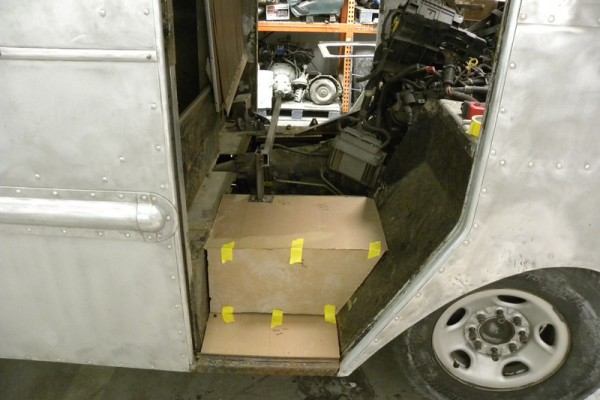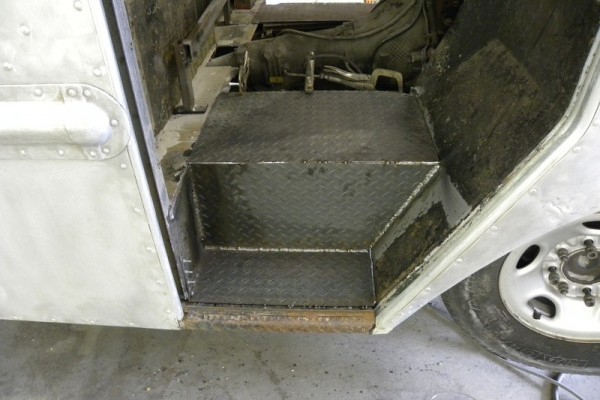When we introduced you to Top Gear on History co-host Rutledge Wood and his latest project, a 1949 Chevy Kurbmaster step van, we promised to bring you more updates on the world’s coolest motorized aluminum box.
Well, the build is done, and Rutledge has done his Power Tour gig (you can read his blog from the Hot Rod Tour on Hot Rod’s website. And as promised, we have more build highlights to share with you, courtesy of van creator American Resto Mods.
But that’s not all we have for you. Summit Racing has created Rutledge Wood Van Parts Combos for those who might be inclined to build their own version of the Chevy step van. And lest you think there isn’t anyone else, er, open-minded enough to build one, we have it on good authority that the head of Summit Racing’s Motorsports department has recently acquired a 1962 Olson Kurbside Dodge P400 dually van to hot rod.
If you want to see more of what American Resto Mods did to create the Rutledge Wood Van, head over to the American Resto Mods websiteand browse their photo gallery. Be warned—there are roughly eight zillion photos to go through, so budget your time accordingly.
Bread truck fever—catch it!
Parts List
• Chevrolet Performance 525 HP LS3 crate engine and engine controller kit
• Performance Automatic Street Smart 4L80E transmission kit
• Summit Racing headers
• Be Cool Power Cooling Module
• ididit steering column and Touch-n-Go keyless ignition system
• Energy Suspension Hyperflex bushing kit, sway bar bushings, and motor/transmission mounts
• Vintage Air climate control system
• American Autowire wiring harness
• Classic Instruments Bomber Series gauges and bezels
• Yokohama Parada Spec-X tires
• EBC brake rotors and Power Stop brake pads

























I have a kurbside van looking for left side round corner windshild . Grumman body
I’m looking for a passnger corner window. For a 49 Grumman kurbside. Olso other parts. Lucky.
808-649-0035.
Where did you find the replacement glass?
[…] uses one of them – a 1949 Chevy Kurbmaster bread truck with a juiced-up engine and a 1999 Chevy Silverado frame – to haul vehicles around during the […]
[…] know we’ve talked about it before, and before that, and before that…but what can we say? We’re proud! Summit Racing helped […]
I have a veh like the 1949 chevy kurbmaster where can I get more info on the built that Rutledge did or shop who did work munbf1@comcast.net thanks
I believe you can get the curved windshield glass made at Patriot Glass in Massachusetts. different locations, but same company. I’ve heard they have the molds in stock and make up the glass. Better deal if a group needs these corner glass pieces and they make a ‘lot’.